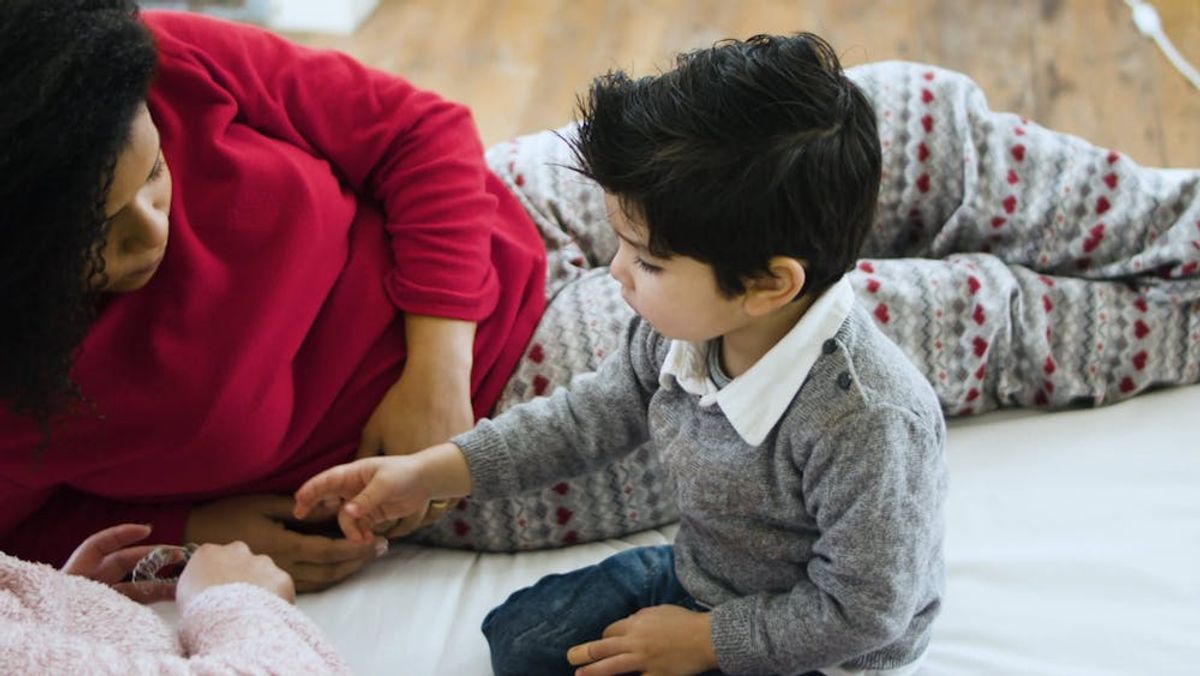
The article ‘Fostering Growth with Positive Parenting: Approaches That Strengthen Child Discipline’ delves into the transformative power of positive parenting techniques. It emphasizes a nurturing approach that focuses on education, empathy, and emotional bonding to guide children towards responsible behavior and growth. By shifting from punitive measures to constructive guidance, parents can create a supportive environment that fosters trust, mutual respect, and a strong parent-child bond, ultimately leading to better behavioral outcomes and a harmonious family dynamic.
Key Takeaways
- Positive discipline techniques prioritize teaching over punishment, helping children understand the consequences of their actions and encouraging better choices.
- Cultivating a growth mindset through discipline involves shifting from punishment to problem-solving, fostering emotional intelligence, and reinforcing learning.
- Building trust and connection with children forms the heart of positive parenting, creating a safe space for dialogue and cooperation.
- Consistent consequences without physical punishment can be implemented through clear expectations, positive behavior modeling, and empathy.
- Fostering a nurturing environment through positive parenting leads to more meaningful and lasting behavior changes, strengthening the parent-child relationship.
Positive Discipline: A Constructive Approach to Child Behavior

Understanding the Impact of Positive Reinforcement
Positive reinforcement is a cornerstone of effective parenting, shaping behaviors in children through the use of praise, attention, and rewards. Children are more likely to repeat actions that are positively acknowledged, as they associate these behaviors with pleasant outcomes. This method not only promotes the repetition of good behavior but also fosters a child’s self-esteem and self-efficacy.
- Emphasize positive reinforcement over punishment for undesirable behavior.
- Praise and reward your child for actions such as kindness, rule-following, or task completion.
- Use positive reinforcement to encourage healthy habits like eating well and exercising.
Positive reinforcement creates a supportive emotional climate in the home, strengthening the parent-child relationship and setting the stage for ongoing positive development.
By consistently applying positive reinforcement, parents can effectively guide their children towards making better choices and developing healthy habits. It’s a strategy that not only addresses immediate behavior but also builds the foundation for long-term growth and well-being.
Teaching Responsibility and Consequence
To effectively teach children responsibility, it’s essential to provide them with opportunities to manage their own tasks and face the outcomes of their actions. This approach aligns with the principle that responsibility is best learned through experience.
- Consistent consequences are crucial in this learning process. They should be logical and proportionate, aiming to guide rather than punish.
- Modeling the desired behavior is another key aspect. When children see adults acting responsibly, they are more likely to emulate those actions.
- Allowing natural consequences to occur can also be a powerful teacher. If a child forgets their coat, feeling cold is a direct result of their decision.
By focusing on teaching rather than punishing, we create a learning environment where children can develop self-control, empathy, and problem-solving skills.
Consistency in discipline provides a sense of security for the child, helping them to understand the link between their behavior and its consequences. Encouraging children to express their emotions and discuss their actions fosters a deeper understanding of responsibility.
Maintaining a Supportive Environment for Growth
Creating a nurturing atmosphere is essential for a child’s development. A supportive environment acts as a fertile ground for children to flourish, both emotionally and intellectually. Here are some ways to maintain such an environment:
- Recognize and celebrate your child’s efforts, not just their achievements.
- View mistakes as valuable learning opportunities.
- Provide consistent and loving guidance to foster self-trust.
By offering our full attention and understanding, we encourage our children to explore their world with confidence and curiosity.
It’s important to remember that a supportive environment extends beyond the physical space. It includes the emotional climate we create through our interactions. Encouraging emotional expression and showing empathy towards our children’s experiences are key components of a nurturing home.
Cultivating a Growth Mindset in Children Through Discipline

Shifting from Punishment to Problem-Solving
Moving away from punitive measures and towards problem-solving strategies is a transformative step in child discipline. It helps children learn and grow, shifting the focus from mere behavior correction to developing essential life skills. This approach is not about avoiding consequences, but about understanding and addressing the underlying needs that lead to certain behaviors.
Problem-solving with children involves several key steps:
- Identifying the behavior and understanding its causes.
- Communicating effectively to express why the behavior is problematic.
- Collaborating with the child to find constructive solutions.
- Encouraging reflection on the outcomes and learning from the experience.
By engaging in this process, we not only guide children towards better choices but we also open the door for more effective and compassionate communication.
This method aligns with the insights of experts like Dr. Ross Greene, who advocate for a shift from punishment to problem-solving to foster a healthier disciplinary process. It’s crucial to convey to children that consequences are there to teach better behavior, not to punish. When children understand that discipline is a learning process, they are more likely to internalize positive behaviors and make better choices in the future.
Encouraging Emotional Intelligence and Communication
Fostering emotional intelligence (EI) in children is a cornerstone of positive parenting. Encourage your child to express their emotions in a healthy way, whether through conversation, art, or play. This not only prevents behavioral issues but also promotes a deeper understanding of their feelings.
- Teach that all emotions are valid and provide tools for healthy expression.
- Model emotional regulation and self-control.
- Encourage group activities that require cooperation and understanding.
By prioritizing quality time and teaching children to respect both their own rights and the rights of others, we lay the groundwork for improved resilience and stronger relationships. Emotional intelligence is not just about managing our own emotions, but also about honoring the feelings of others, leading to better friendships and cooperation.
When children learn to communicate their feelings effectively, they are better equipped to navigate social situations and build meaningful connections.
Reinforcing Learning and Better Choices
To effectively reinforce learning and promote better choices, it’s essential to encourage children to think about the consequences of their actions. This can be achieved through a combination of strategies:
- Offer choices within set boundaries to empower children and enhance their decision-making skills.
- Use positive reinforcement to acknowledge and reward good behavior, thereby motivating children to continue making wise decisions.
- Model the behavior you wish to see, demonstrating how to weigh options and consider outcomes.
Discipline is not about making children obey
It’s about guiding them towards autonomy and responsible decision-making. By focusing on these methods, we not only teach children how to make better choices but also instill in them the confidence to do so independently.
Building Trust and Connection: The Heart of Positive Parenting

Creating a Safe Space for Open Dialogue
Creating a safe space for open dialogue is essential in fostering a nurturing environment where children feel comfortable expressing themselves. By showing genuine interest and empathy, we encourage our children to share their thoughts and experiences without fear of judgment. This not only strengthens our connection with them but also allows us to gain a better understanding of their perspective.
Active listening is a key component in this process. It involves hearing their thoughts and feelings without interruption, which conveys respect and validation. Here are some steps to enhance active listening:
- Maintain eye contact to show attentiveness.
- Nod and provide non-verbal cues to indicate understanding.
- Reflect back what you’ve heard to confirm comprehension.
- Ask open-ended questions to encourage deeper conversation.
When we set clear and consistent limits, it helps children feel safe and secure, knowing what is expected of them. This clarity contributes to a harmonious atmosphere at home.
Encourage your children to ask questions and express their concerns. Listen attentively and respond with compassion. This approach not only helps in building trust but also in teaching children how to articulate their emotions in a constructive and healthy manner.
Fostering Mutual Respect and Cooperation
In the journey of positive parenting, fostering mutual respect and cooperation stands as a cornerstone. Children thrive when they feel respected and are more likely to engage in cooperative behavior. This mutual respect is cultivated through consistent, empathetic interactions that emphasize the child’s perspective.
Empathy is key in understanding a child’s emotions and motivations. By prioritizing empathy, parents can approach discipline as a collaborative effort rather than a battle of wills. Here are some steps to enhance mutual respect and cooperation:
- Recognize and validate your child’s feelings and viewpoints.
- Engage in active listening to foster open communication.
- Collaborate with your child to find solutions to behavioral challenges.
By shifting from coercion to understanding and teaching, we lay the groundwork for a relationship based on mutual respect and a shared goal of personal growth.
When discipline is approached from a place of kindness and understanding, it becomes a powerful tool for teaching and growth. It encourages children to make responsible decisions and to view adults as allies rather than adversaries.
Strengthening the Parent-Child Bond
The cornerstone of positive parenting lies in the strength of the parent-child bond. This bond is the foundation upon which all other aspects of discipline and growth are built. To foster this essential connection, consider the following steps:
- Prioritize quality time: Engage in activities that both you and your child enjoy. Use these moments not just for fun, but also as opportunities to teach, listen, and grow together.
- Encourage open communication: Make it a point to listen actively and speak honestly with your child, ensuring they feel heard and valued.
- Model positive behavior: Children learn by example, so consistently demonstrate the values and behaviors you wish to instill.
By prioritizing the building of a strong emotional connection with our children, we create a solid groundwork for guiding their behavior with empathy and compassion.
Remember, a nurturing environment is key to a thriving parent-child relationship. It’s about more than just discipline; it’s about creating a space where your child feels secure, supported, and understood. This approach not only strengthens the bond but also empowers both children and parents.
Implementing Consistent Consequences Without Physical Punishment

Setting Clear Expectations and Boundaries
Establishing clear expectations and boundaries is a cornerstone of positive parenting. Children thrive when they understand the limits within which they can operate, as it provides them with a structured environment that is conducive to learning and growth.
- Communicate your expectations in a positive and constructive manner.
- Consistently enforce rules to teach responsibility and self-control.
- Explain the rationale behind rules to foster voluntary compliance.
Consistency in boundary-setting is key to making children feel secure and understood. It helps them navigate social expectations and understand the consequences of their actions.
Offering choices within these boundaries can empower children, giving them a sense of agency while still adhering to the established guidelines. This balance between guidance and freedom is essential for nurturing discipline through empathy and understanding.
Modeling Positive Behavior and Decision-Making
Children are astute observers, often imitating the behaviors they see in adults. Modeling positive behavior is a cornerstone of effective parenting, as it sets a standard for children to emulate. By consistently demonstrating qualities such as empathy, respect, and patience, parents provide a live template for their children’s behavior.
Decision-making is another critical skill that children learn from their parents. Offer choices within set boundaries to encourage independent thinking and to foster confidence in their ability to make decisions. This practice not only promotes critical thinking but also instills a sense of responsibility.
- Demonstrate healthy conflict resolution
- Show emotional regulation in challenging situations
- Provide opportunities for children to make choices
By embodying the values and behaviors we wish to instill in our children, we create a powerful, unspoken curriculum that shapes their lifelong habits and attitudes.
Nurturing Discipline Through Empathy and Understanding
Empathy is the cornerstone of nurturing discipline. By recognizing and responding to a child’s feelings, parents can foster a deeper connection and promote positive behavior. Empathy allows us to see the world through our child’s eyes, providing insight into their actions and reactions.
Empathic discipline is not about leniency; it’s about guiding children with a compassionate understanding of their emotional state. This approach involves several key steps:
- Listening actively to the child’s concerns and feelings.
- Validating their emotions without immediate judgment or dismissal.
- Collaborating on finding solutions that respect the child’s perspective.
- Consistently applying consequences that are fair and related to the behavior.
By approaching discipline with empathy, children are more likely to feel understood and supported, leading to improved behavior and overall emotional well-being.
When discipline is rooted in empathy, it transcends mere correction and becomes a transformative experience for both parent and child. It nurtures a safe environment where children are encouraged to express themselves and learn from their experiences.
Conclusion
In conclusion, the journey of parenting is greatly enhanced by embracing positive discipline strategies that prioritize teaching over punishment. By fostering a nurturing environment where open communication, positive reinforcement, and empathetic understanding are at the forefront, parents and caregivers can effectively guide their children towards responsible behavior and emotional maturity. This approach not only strengthens the bond between parent and child but also equips the younger generation with the necessary skills to navigate life’s challenges. Ultimately, positive parenting paves the way for a future where discipline is synonymous with growth, learning, and a deep, respectful connection.
Frequently Asked Questions
What is positive discipline and how does it differ from traditional discipline?
Positive discipline is a constructive approach to child behavior that focuses on teaching and guiding rather than punishing. It helps children understand the consequences of their actions and encourages them to make better choices, fostering responsibility and growth. Traditional discipline often relies on punishment and coercion, which can be less effective in promoting long-term behavioral change.
How can parents cultivate a growth mindset in children through discipline?
Parents can cultivate a growth mindset by shifting from punishment to problem-solving, encouraging emotional intelligence and communication, and reinforcing learning and better choices. This approach helps children view challenges as opportunities for growth and learn from their mistakes, rather than fearing failure.
What role does trust and connection play in positive parenting?
Trust and connection are central to positive parenting. By creating a safe space for open dialogue and fostering mutual respect and cooperation, parents strengthen the parent-child bond. This foundation of trust and emotional bonding makes discipline more effective and encourages children to respond positively to guidance.
Can discipline be consistent without physical punishment?
Yes, discipline can be consistent and effective without physical punishment. By setting clear expectations and boundaries, modeling positive behavior, and nurturing discipline through empathy and understanding, parents can guide their children towards responsible behavior and maintain a strong, respectful relationship.
What are some strategies for maintaining a supportive environment for child growth?
Maintaining a supportive environment involves providing unconditional love, setting up a structured yet flexible routine, offering encouragement and positive reinforcement, and being a good role model. It also means creating opportunities for children to learn from natural consequences and solve problems independently.
How can parents address behavior issues with compassion and respect?
Parents can address behavior issues by understanding the child’s perspective, communicating openly about expectations and feelings, and offering guidance on how to improve behavior. Compassionate discipline involves helping children navigate their emotions, teaching problem-solving skills, and avoiding harsh criticism or punishment.






